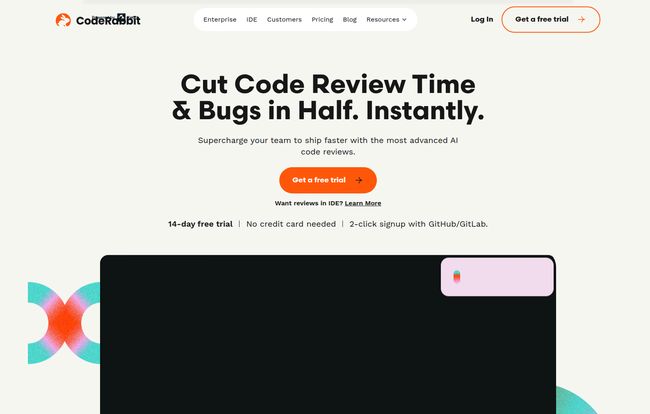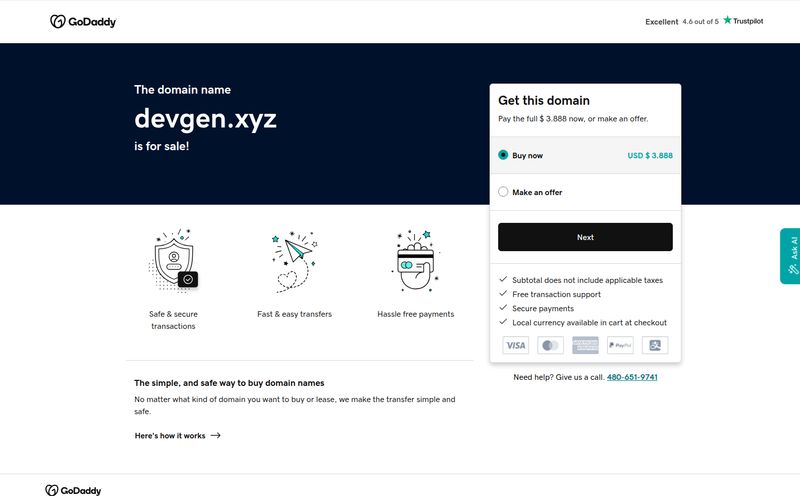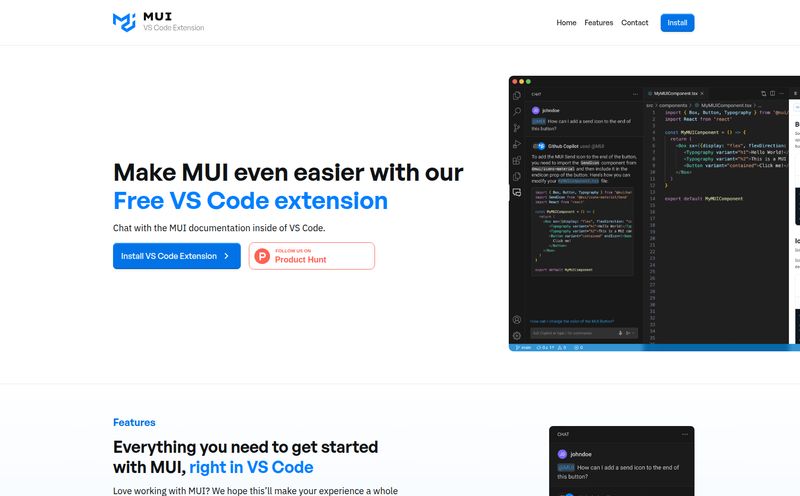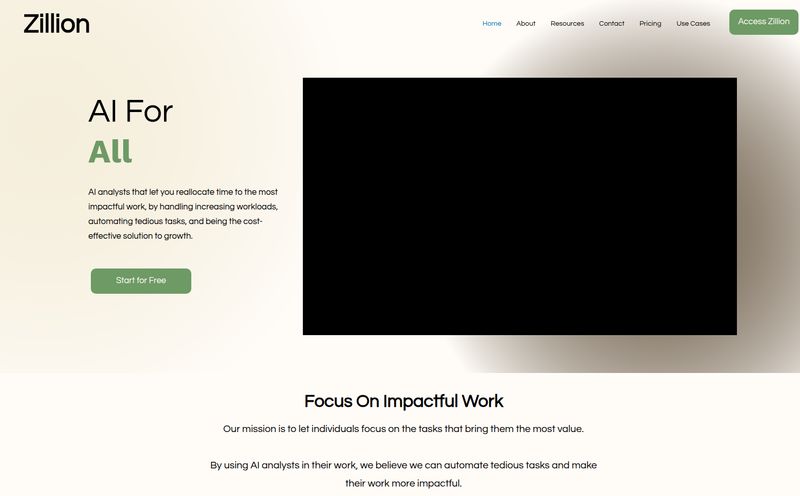Code review. It’s the necessary chore of our industry, the gatekeeper between our beautiful logic and the production server. We all know it's important for maintaining code quality, but man, can it be a drag. The endless pull request queues, the context switching, the polite back-and-forths over stylistic choices... it can grind productivity to a halt.
I’ve been in the development and SEO world for years, and I’ve seen a parade of tools promising to automate away our problems. Most are just fancy linters with a bit of marketing spin. So when I kept hearing about CodeRabbit, the "most installed AI app on GitHub," I was naturally skeptical. Another AI tool promising the moon? Sure. But with claims of fixing over 10 million bugs for more than 5,000 customers, I figured I owed it to myself—and you—to see if there was any real magic behind the curtain.
What Exactly is CodeRabbit? (More Than Just a Linting Bot)
First off, let's get one thing straight: this isn't your grandpa's static analysis tool that just complains about trailing whitespace. CodeRabbit pitches itself as an AI-powered code review partner. Think of it less like a stern robot overlord and more like a hyper-caffeinated, incredibly meticulous pair programmer who never sleeps and lives inside your GitHub repo. Its big, bold claim is that it can help catch over 95% of bugs before they ever merge.
The core idea is to automate the tedious parts of code review. It scans every pull request, looks for potential bugs, security vulnerabilities, and even opportunities for improvement, then leaves comments right on the PR, line by line. This frees up human reviewers (your expensive senior devs) to focus on the stuff that really matters: architecture, user experience, and overall strategy. It’s about clearing the weeds so your team can focus on tending the garden.

Visit CodeRabbit
The Features That Made Me Look Twice
A flashy landing page is one thing, but the feature list is where the rubber meets the road. A few things in CodeRabbit's arsenal genuinely caught my eye, not just as shiny objects but as solutions to real-world developer friction.
Contextual Line-by-Line Feedback (The Real Game-Changer)
This is it. This is the killer feature. We’ve all seen AI suggestions that are technically correct but completely miss the point. CodeRabbit, however, provides contextual feedback. It’s the difference between a tool saying "this function is too complex" and it saying, "Consider refactoring this section. By extracting this logic into a separate helper function, you can improve readability and reuse it in the XYZ module." It doesn't just spot problems; it offers intelligent, actionable solutions right where you need them. It feels less like a critique and more like a conversation.
Seamless GitHub Integration and Direct Commits
I've always believed the best tools are the ones that get out of your way. CodeRabbit lives and breathes inside GitHub (and other Git platforms). There's no separate dashboard you have to constantly check. The reviews appear as comments in the PR, just like a human teammate's would. Even better, you can interact with the bot. Ask it for a different suggestion, or if you like what it proposes, you can commit the change directly from the comment. That tiny feature is a massive workflow accelerator. No more switching tabs, copy-pasting, and making a new commit. Just click, and you're done.
Beyond Just Reviews: Jira, Linear, and Agentic Chat
This is where CodeRabbit shows it's thinking about the entire development lifecycle. The integration with project management tools like Jira and Linear (available on the Pro plan) means the review process is tightly coupled with your team's sprint planning and task tracking. It bridges the gap between code and project status.
And the Agentic Chat? It's a fantastic touch. You can literally have a conversation with CodeRabbit about your code. “Can you explain this vulnerability in more detail?” or “Help me write unit tests for this function.” It turns a static tool into an interactive resource, which is something I haven't seen done this well elsewhere.
So, How Does It Actually Feel to Use It?
Talk is cheap, so I hooked CodeRabbit up to one of my personal projects. The setup was absurdly simple—a few clicks to authorize it on my GitHub repository, and that was it. The next PR I opened, a little rabbit icon popped up, indicating it was on the case. A few minutes later, the comments started rolling in.
It caught a potential null pointer exception I had completely missed. It suggested a more efficient way to write a loop I had cobbled together. And it even offered to generate docstrings for a new function. Were all of its suggestions pure gold? Not every single one. Occasionally, a suggestion would be a bit overzealous, but that’s fine. It’s a starting point for discussion. It surfaced things I hadn't considered, and for that alone, it was valuable. The signal-to-noise ratio was impressively high, much better than I expected.
Let's Talk Money: CodeRabbit Pricing Breakdown
Alright, the all-important question: what's this going to cost? The pricing structure is actually quite straightforward, which I appreciate. No confusing credits or byzantine tiers.
- Free Plan ($0): This is your entry point. You get a summary for each pull request and basic reviews. It's a great way to test the waters and includes a 14-day free trial of the paid features. Perfect for individual devs or just for kicking the tires.
- Lite Plan ($12/dev/month, billed annually): For $15 on a monthly basis. This is where it gets serious. You get unlimited pull request reviews, the agentic chat feature, and customizable learnings. For a small team, this is an incredible value. For the price of a couple of fancy coffees, you're getting a tireless review assistant.
- Pro Plan ($24/dev/month, billed annually): Or $30 monthly. This, in my opinion, is the sweet spot for most professional teams. It includes everything from Lite, plus the crucial Jira & Linear integrations, priority support, and advanced customizable reports. The integration alone is likely worth the price jump for businesses that live in those tools.
- Enterprise Plan (Talk to us): The standard "call us for a quote" plan for large organizations needing things like SSO, dedicated support, and other enterprise-grade features.
And here's something I really respect: The Pro plan is free, forever, for open-source projects. That's a huge win for the community and shows the team behind CodeRabbit is invested in more than just their bottom line. Big kudos for that.
The Good, The Bad, and The Realistic
No tool is perfect. After spending some time with it, here's my unfiltered take. The good is pretty obvious: it saves a ton of time, it catches bugs you would have missed, and it genuinely improves developer productivity. It's an incredible force multiplier for a development team.
What about the downsides? The docs mention that paid plans are needed for full functionality, which is fair enough—this is a business, not a charity. It may require a tiny bit of initial configuration to tune it to your team's specific standards, but it's minimal. The most valid counterpoint is that its effectiveness depends on the quality of the underlying AI model. While it's excellent now, it's still an AI. It won't understand the deep business context behind a strange-looking piece of code. It’s not a replacement for human oversight, nor should it be.
Frequently Asked Questions about CodeRabbit
What's the main difference between the Lite and Pro plans?
The biggest difference is integrations. The Pro plan connects directly with project management tools like Jira and Linear, which is a huge workflow benefit for teams using those platforms. Pro also offers more advanced, customizable reports and priority support.
Do all developers on my team need a license?
Typically, these per-developer pricing models apply to active contributors whose code you want to be reviewed by the tool. It's best to check their specific terms, but generally, you'll want a seat for everyone pushing code regularly.
Is there a limit on the number of repositories?
The pricing page doesn't mention a repository limit on the paid plans, which is great. It seems to be based on the number of developer seats, not how many projects you're working on.
How does the free plan for open source work?
If you have a public repository for an open-source project, you can get the Pro plan for free. You just sign up and get started. It's a fantastic way for the CodeRabbit team to give back to the community.
Is my proprietary code secure with CodeRabbit?
This is a big one for any business. CodeRabbit takes security seriously. They are SOC2 Type II compliant, use SSL encryption everywhere, and run in secure cloud environments. This means they adhere to strict industry standards for handling your data and code securely.
Can I try it before I buy it?
Absolutely. All plans come with a 14-day free trial that gives you access to the paid features. No credit card is required to get started, so it's a completely risk-free way to see if it fits your team's workflow.
Final Verdict: Is CodeRabbit Worth It?
The long and short of it is, yes. For almost any professional development team, I think CodeRabbit is absolutely worth it.
It's not about replacing your senior developers. It's about augmenting them. Let CodeRabbit handle the typos, the forgotten edge cases, and the low-hanging fruit. Let it be the first line of defense that keeps the codebase clean. This frees up your human experts to do what they do best: think about the big picture, mentor junior devs, and solve the really hard problems.
If your team is feeling the pain of slow, laborious code reviews, or if you're looking for a way to increase your development velocity without sacrificing quality, you should give CodeRabbit a shot. The ROI in terms of saved developer hours and bugs caught before they hit production could be massive. In a world full of overhyped AI tools, this one feels refreshingly practical and genuinely useful.
Reference and Sources
- CodeRabbit Official Website
- CodeRabbit Pricing Page
- CodeRabbit on the GitHub Marketplace
- Information on SOC 2 Compliance



